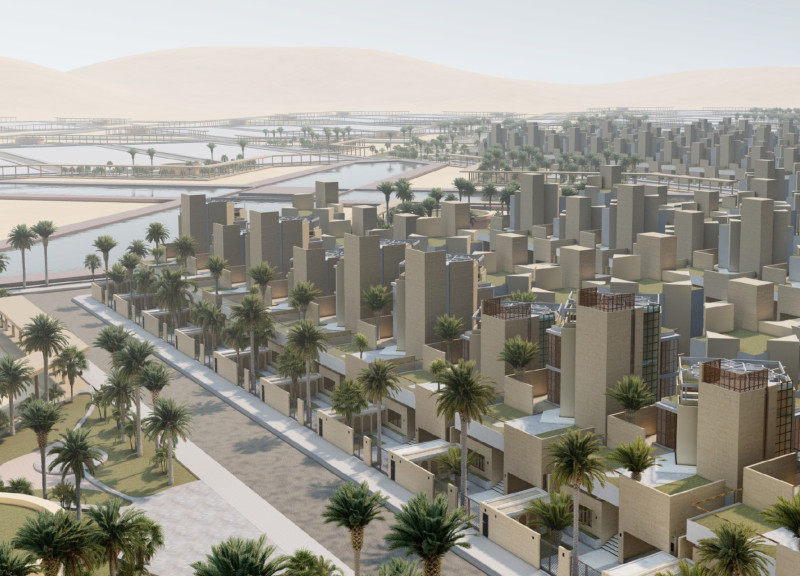5 key facts about this project
The architecture itself embodies a harmonious blend of modernist and contextual design principles. The exterior façade features an interplay of materials that contributes to the visual narrative of the project. Key materials include reinforced concrete, glass, and sustainably sourced wood. The use of glass allows for ample natural light to permeate the interiors, fostering a connection between the indoor environment and the surrounding landscape. This thoughtful material selection not only enhances the building's energy efficiency but also establishes a sense of openness and transparency.
A notable aspect of the design is the incorporation of outdoor terraces and green roofs, which extend the usable space and promote ecological sustainability. These features serve multiple purposes, providing leisure areas for occupants while supporting urban biodiversity. The terraces are designed as transitional spaces that encourage outdoor activities and social interactions, which reflects a growing trend in architecture to promote well-being through environmental design.
The architectural layout displays a clear focus on user experience, with a thoughtful organization of public and private zones. Circulation within the building is intuitive, with clear sightlines that guide visitors through the designated paths. The main entrance is designed to create a welcoming atmosphere, drawing individuals into the heart of the building. Interior spaces are characterized by their flexibility, allowing for an array of configurations to accommodate diverse events or activities, indicating the design's adaptability.
A unique element of this project is the integration of smart building technology. This innovative approach enables the monitoring and management of energy consumption while enhancing user comfort. Features such as automated lighting and climate control systems illustrate the commitment to modern convenience and environmental stewardship. Additionally, the design incorporates sound insulation techniques that enhance acoustics within larger communal areas, ensuring that various events can take place simultaneously without interference, emphasizing the importance of functionality in architectural design.
The project also demonstrates sensitivity to its cultural and geographical context. By analyzing local architectural traditions and integrating them into the design vocabulary, the project respects its environment and contributes positively to the urban fabric. This dialogue between old and new is essential for creating spaces that resonate with the community, fostering a sense of identity and belonging.
Overall, this architectural project encapsulates a sophisticated understanding of design principles while addressing modern societal needs. It balances aesthetics and functionality, representing a forward-thinking approach that prioritizes sustainability, community engagement, and user experience. Readers interested in exploring the finer details of this project are encouraged to review the architectural plans, sections, designs, and ideas presented, as they provide valuable insights into the design process and its outcomes. The project stands as a testament to contemporary architectural thought, offering a glimpse into how spaces can be envisioned to serve multifunctional purposes while maintaining a harmonious relationship with their surroundings.


 Huu Phuoc Tran
Huu Phuoc Tran 























